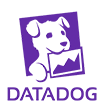Zoho is a suite of cloud-based software applications that can help businesses manage various aspects of their operations. It includes tools for customer relationship management (CRM), email, accounting, human resources, project management, and more. Zoho’s software is designed to be user-friendly and can be accessed from anywhere with an internet connection. This means that users can work remotely, collaborate with colleagues, and access important business data with ease.
With its range of features and easy-to-use interface, Zoho is a powerful tool for businesses looking to improve their operations and grow their business by making great data-driven decisions. Importantly, Zoho can assist these businesses by generating analytics dashboards.
Displaying Zoho analytics data visualizations on a digital sign is easy with Screenly. You can add, delete, and schedule dashboards remotely with an online Screenly account. You will need one digital signage player per screen. A digital signage player renders your Zoho dashboard content to your screen. Screenly offers both the Screenly Player and Screenly Player Max. You can learn more about each device’s unique features at the link here.
To display Zoho analytics dashboards on your digital signs using Screenly, you will need to get the public share URL for the dashboard you would like to display on your screen. We highlight the steps for getting your Zoho dashboard public share URL below.
Getting your Zoho dashboard public share URL
To get your Zoho dashboard public share URL, log in to your Zoho Analytics account and open the dashboard you would like to display.
At the top-right of the dashboard, click on the “Share” button to open a sub-menu containing options for sharing your analytics dashboard.

From the “Share” sub-menu, click on “Make this view public”. This opens a pop-up modal that allows you to edit various settings before sharing your dashboard.

In the pop-up modal, click on the dropdown button beside “Access Permission”.

After opening the dropdown menu, tick the radio button for the “Publish on the web” option.

Edit the other settings in the pop-up modal as you like. Click “OK”, then copy the URL for accessing the view. This is the URL that you would use to add the analytics dashboard view as content to Screenly.

Setting up your Zoho dashboard screen with Screenly
Now that you have a public share URL for your Zoho dashboard, you need to add the URL to your Screenly content library. To do so, follow the steps below.
Log in to your Screenly account here. If you do not have a Screenly account, register for a 14-day free trial.
After logging in to your Screenly account, click on the “New” button on the top right of your screen. Then, click on the “Content” tab in the dropdown menu.

Next, click the URL tab in the popup modal and paste the public URL into the “Enter URL link” input field. Be sure to click “Finish” on the bottom right after you successfully add the URL.

With the above steps completed, you can now add this asset to a playlist. To add your content to a playlist, click the “Playlist” tab from the left-hand menu. If you wish to add a new playlist, click the “+ New Playlist” button on the top right of the new screen that loads. To edit the new playlist or a previously existing playlist, click on the name of the playlist you wish to edit from the list of playlists.

Within the playlist, click the “+” icon in the Content section. From there, you will see a popup that will allow you to add the Zoho dashboard content to the playlist from your content collection.

In the new “Add Content to Playlist” popup, find your Zoho dashboard content and click the “+” button next to the file. Then, click the “Done” button below.

You will then see your Zoho dashboard in the playlist’s content section. Next to the dashboard content listing, change the listing’s duration to the time you want the dashboard display on your screen. Be sure to click “Save” on the bottom right.

To assign the playlist containing the Zoho dashboard content to a screen, click on the “Plays On” input field in the “Edit Playlist” section.

A dropdown menu will appear containing all your screens and group labels, select the screen(s) or group(s) of screens you would like the playlist to show on. Make sure to click “Save” at the bottom of the dropdown after selecting the screen(s) or group(s) of screens you want.

Once you assign the playlist containing the Zoho dashboard content to your screen(s) or group(s) of screens, your Zoho dashboard will display on your screen in minutes.
You can then repeat this for all the dashboards that you want to display. You can then simply add each of them as content items within your online Screenly account.
We are here to help
If you have any trouble setting up your Zoho dashboard, let us know at Screenly Support. We are here to help!


